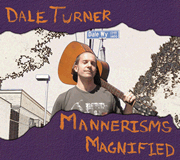
|
 |
|
|
|
|
PAUL
GILBERT LESSON
(Interview Conducted by Dale Turner on 1 November, 1999) This internet-only lesson originally appeared on Guitar One magazine's web site as the first of three “shred lesson” installments run in conjunction with G1's March 2000 issue. The lessons were removed from G1's server March 2002; I've been given the rights to reprint 'em here! That issue included extensive interviews with three of shred's most prized pickers—Paul Gilbert, Yngwie Malmsteen, and Joe Satriani—and is still available as a back issue. (Note: The interviews appearing in the magazine are totally different from the interview/lessons found on this site.)
(All MP3 examples were played on a guitar tuned down one whole step.) |
|||||||||||||||||
|
Back in the day, what was your approach towards developing your picking hand? Paul Gilbert: The right hand picking stuff did not come naturally to me. I'd played for about seven or eight years and really had no significant picking technique, it was all a lot of hammer-ons and pull-offs. And what it took was learning to use the metronome—slowing a repeating powder down to such a speed where I could do it perfectly, then slowly speeding it up. And it was really inspiring to see that work. I learned a real simple, six-note picking lick on one string [plays Fig. 1], and within a couple weeks I could play it really fast.
And the improvement was quick enough where it was exciting for me—knowing that one day I could play it at “this” speed, and the next day I could play it faster. And I could feel it in my hands; the confidence and authority was building up. But the hardest thing about fast picking is to go from string to string, so for crossing over two strings I practiced this one [plays Fig. 2], which uses what I call “outside picking.”
When you practice a lick that involved switching between two strings, if you're playing with alternate picking, which I do, you have a choice to either go down-up—where your pick works “outside” the strings—or up-down, which would be “inside.” And really, when you do a full ascending / descending scale with alternate picking, you have no choice but to do both; they both occur. But if I'm doing just one little set pattern, I tend to use “outside” picking. Of course there's also the real crazy string-skipping ones [plays Fig. 3], and those also relate real well to the “outside” picking.
Outside picking really makes string-skipping a million times easier because you don't have to worry about accidentally hitting the strings that are in-between the skips, because you're going “outside” of them. I do something real similar to that in the song “Poison Eyes,” and I pick everything except for the descending notes on the high E string. I noticed you occasionally use a string-skipping approach with pentatonic shapes. Paul: For the string-skipping pentatonic stuff, the one I use all the time is pretty easy to visualize because it sort of relates to an Am7 shape, but it's played three-notes-per-string [plays Fig. 4].
I'm just beginning on the low C [15th fret, 5th string] and then messing around up high with a tapped slide. These things can only be done when you're sitting down and your chin is about six inches from the neck [laughs]. If you're standing up doing the “Sid Vicious,” it's a little tough. Do you have any chromatic exercises that you practiced to work on right/left hand synchronization? Paul: Most chromatic things I do are little in-between things; I see chromatics as sort of a little “step ladder” into a note you want to hit, like in this bluesy lick I stole [plays Fig. 5].
To me, if I'm going to do an exercise, I want it to be as fruitful as possible. So, if at the end of the day the exercise can be musical, it's an extra-added bonus. There is something I call the “Ace Frehley” scale, which uses chromatics. This one's all A minor pentatonic (A-C-D-E-G), but it's got the “blues” note [i.e., “flatted 5th”—Eb/D#)] and the major 7th [i.e., “G#”] in there [see Fig. 6].
When I first figured out solos, I learned a lot of KISS stuff. Now I use that all the time, but for stuff like this [plays Fig. 7].
What kinds of things inspire some of your scarier licks? Paul: For me, learning classical things really has always been motivating for learning new techniques. You can hear it on some of the Racer X things, and on “Gilberto Concerto” [from Paul’s Flying Dog solo album]. And this [plays Fig. 8] is sort of like the end part in “Bach Rip-Off” [a.k.a., “B.R.O.,” from Racer X's Technical Difficulties], and it's a really sick lick.
It's all straight E minor (E-G-B) arpeggios. It's three sets of ascending sextuplets, but I use the open strings to give my left hand time to get up to the 12th fret to do two notes on the G string, then I do my full string-skipping pattern.
|
|||||||||||||||||
|
©
2000 Cherry Lane Magazines
|
|||||||||||||||||
<<<MORE FREE ONLINE GUITAR LESSONS